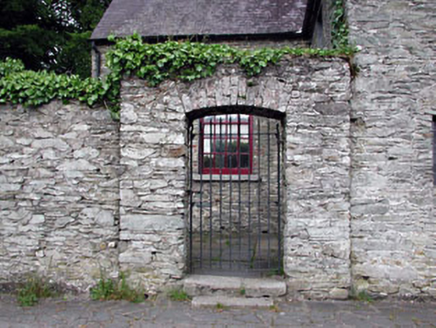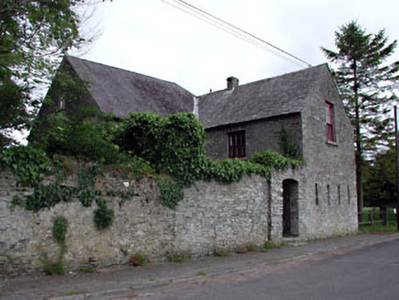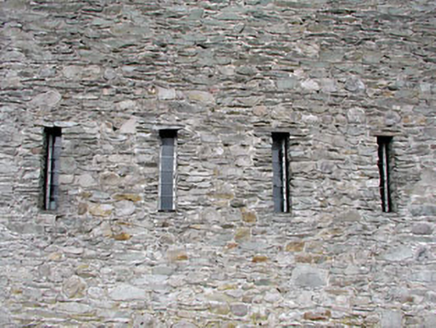Survey Data
Reg No
11822030
Rating
Regional
Categories of Special Interest
Architectural, Historical, Social
Original Use
Meeting house
In Use As
Meeting house
Date
1705 - 1710
Coordinates
279537, 195873
Date Recorded
29/01/2003
Date Updated
--/--/--
Description
Detached two-bay double-height meeting house, built 1708, on an L-shaped plan; single-bay single-storey gabled projecting end bay with half-attic (north). Restored, 1975. Pitched and hipped slate roof on an L-shaped plan with pitched (gabled) slate roof (end bay), clay ridge tiles, and cast-iron rainwater goods on cut-limestone eaves with cast-iron downpipes. Part repointed rubble stone walls originally rendered with rough hewn rubble stone flush quoins to corners; roughcast surface finish to rear (west) elevation. Square-headed window openings with cut-granite sills, and concealed dressings including overburnt red brick voussoirs framing twelve-over-twelve timber sash windows. Road fronted with part ivy-covered rubble stone boundary wall to perimeter.
Appraisal
A meeting house representing an important component of the built heritage of County Kildare with the architectural value of the composition, one forming the nucleus of 'a colony [of Quakers] in Balitore [sic] which was founded by John Barcroft [d. 1723] and another...in the latter part of the seventeenth century' (Notes and Queries VII 1865, 328), confirmed by such attributes as the compact plan form; the generously proportioned openings lighting the meeting room with those openings showing conventional Georgian glazing patterns; and the high pitched roof. Having been successfully restored by Kildare County Council following a prolonged period of neglect in the later twentieth century, the form and massing survive intact together with substantial quantities of the original fabric, both to the exterior and to the interior: however, the removal of the surface finish has not had a beneficial impact on the character or integrity of a meeting house making a pleasing visual statement in a rural village street scene.





